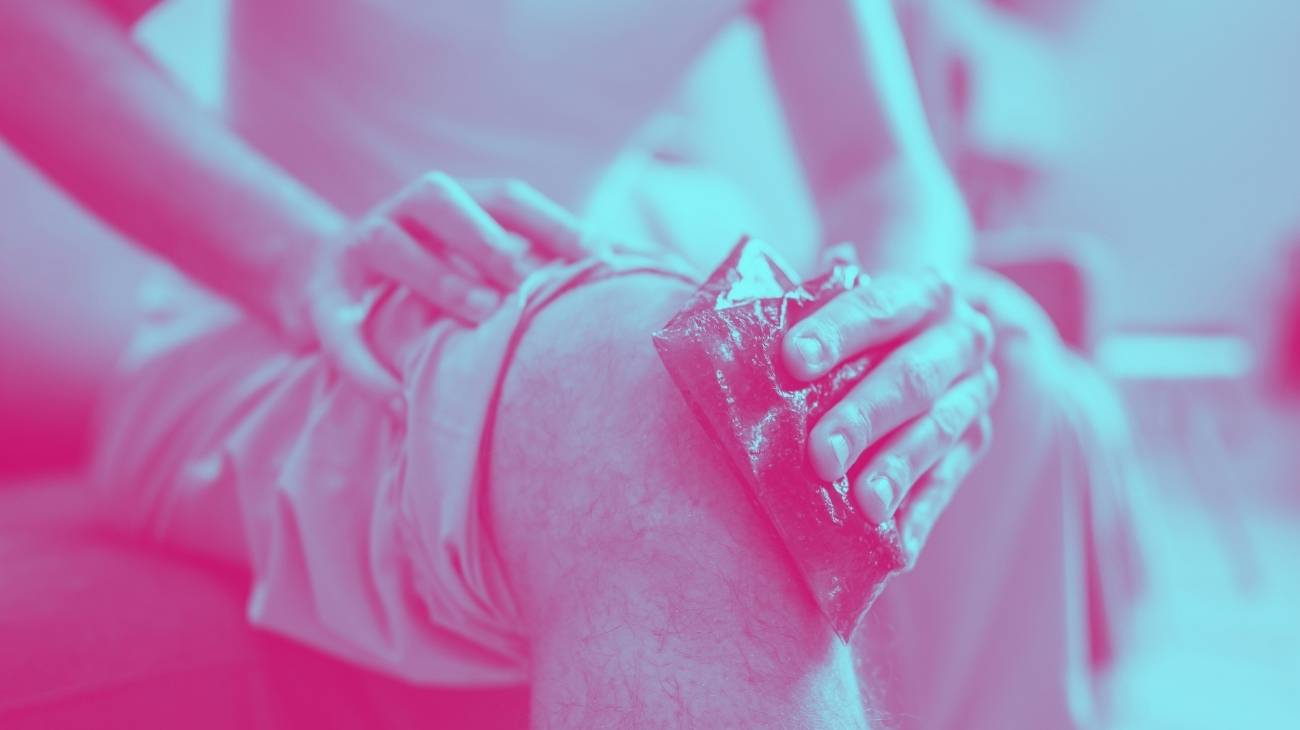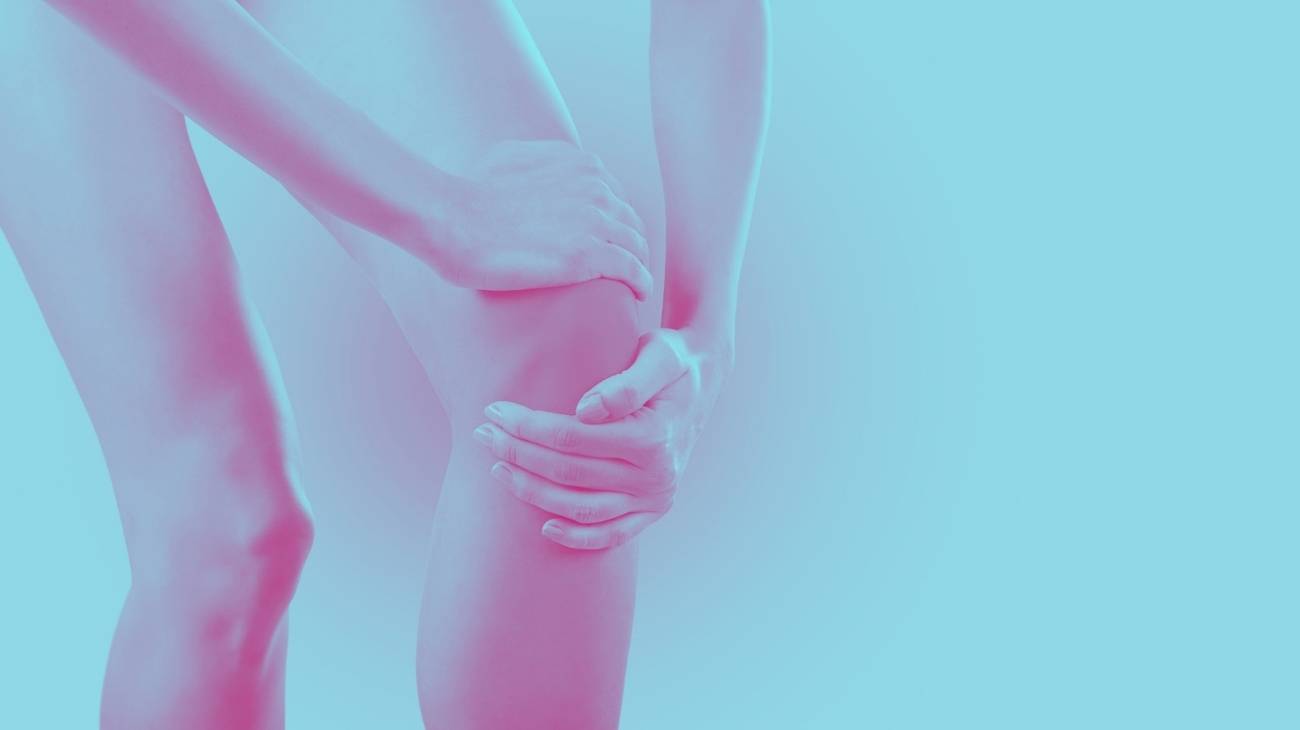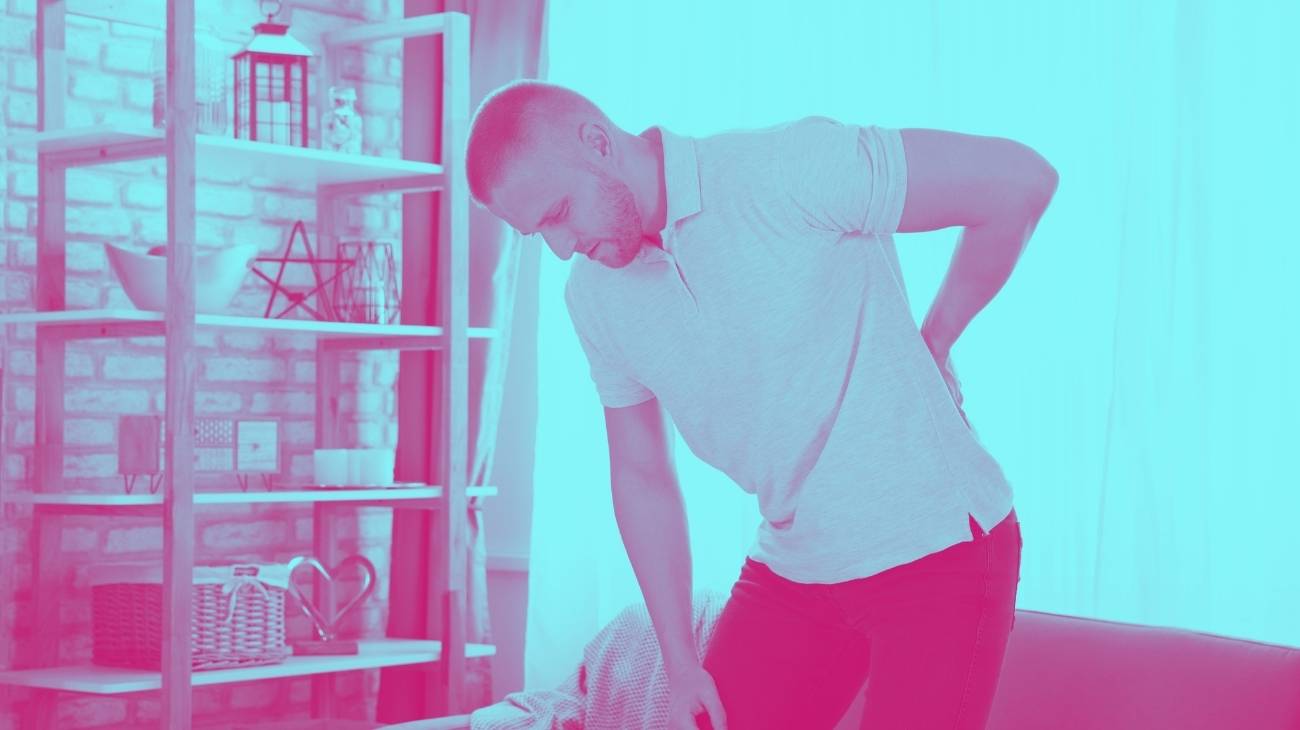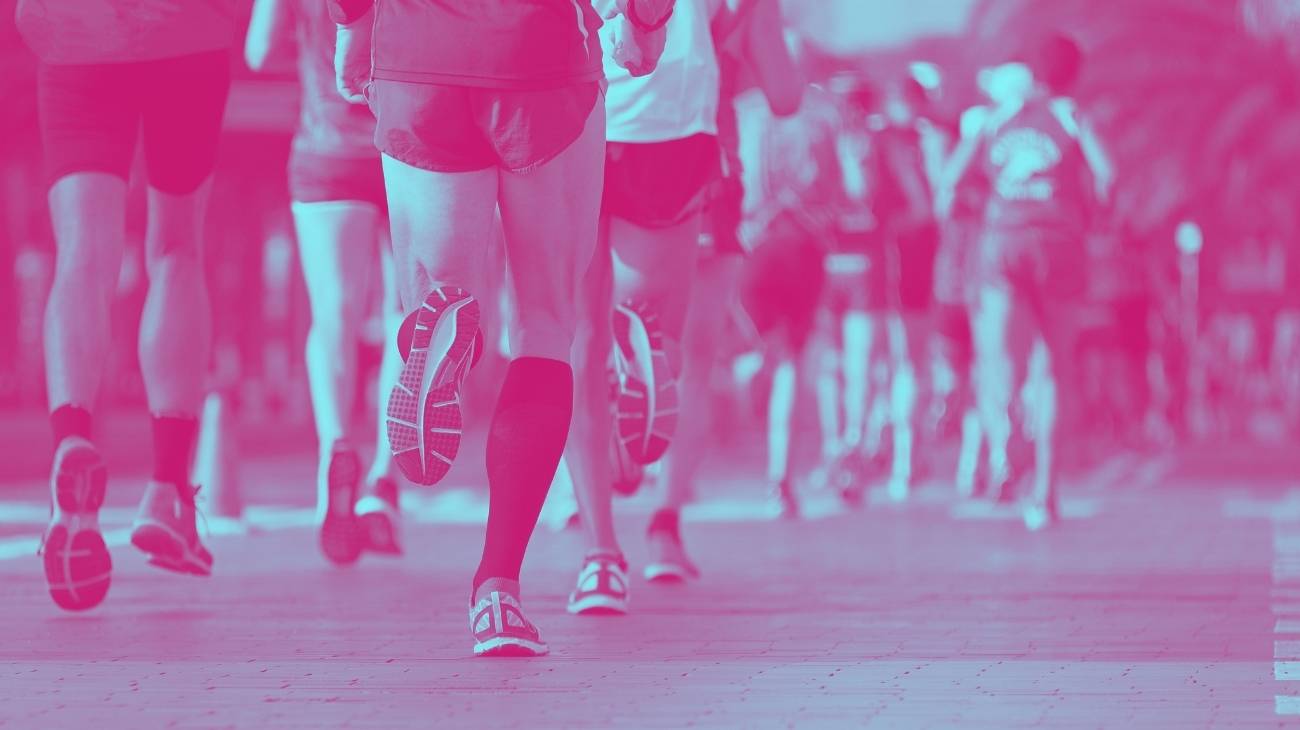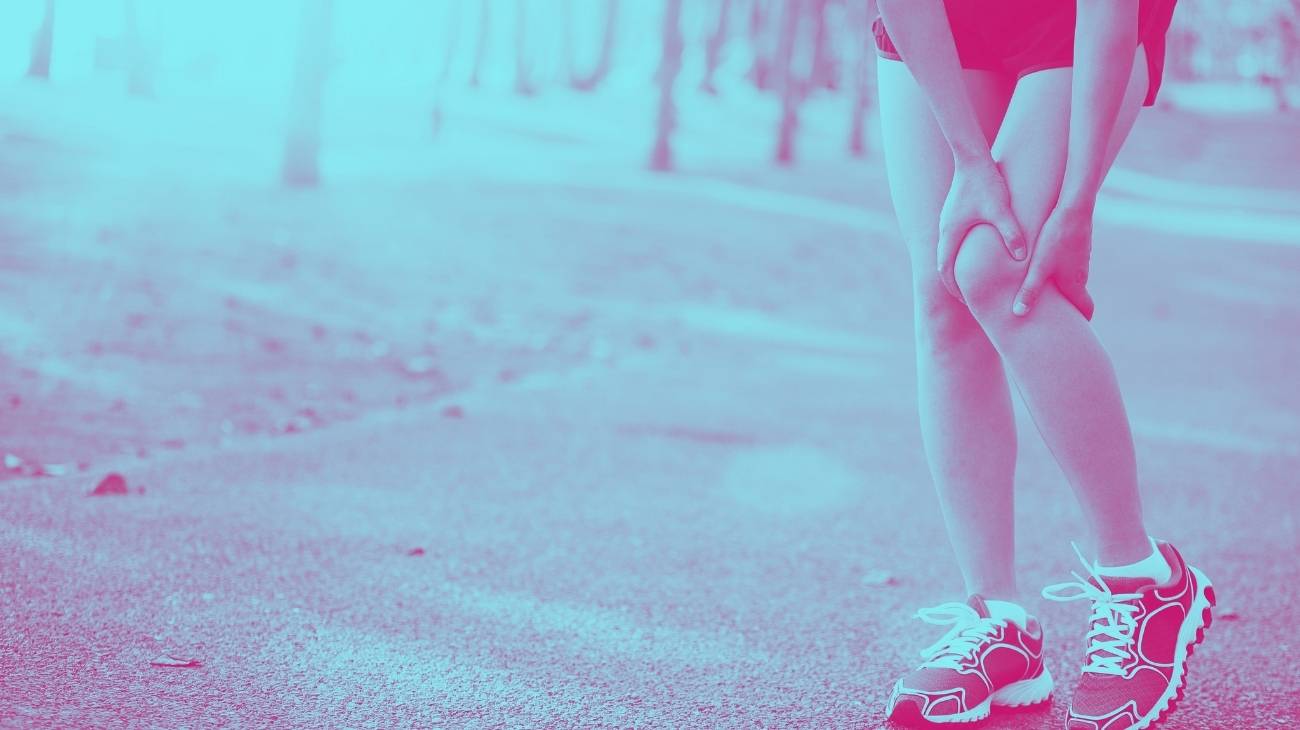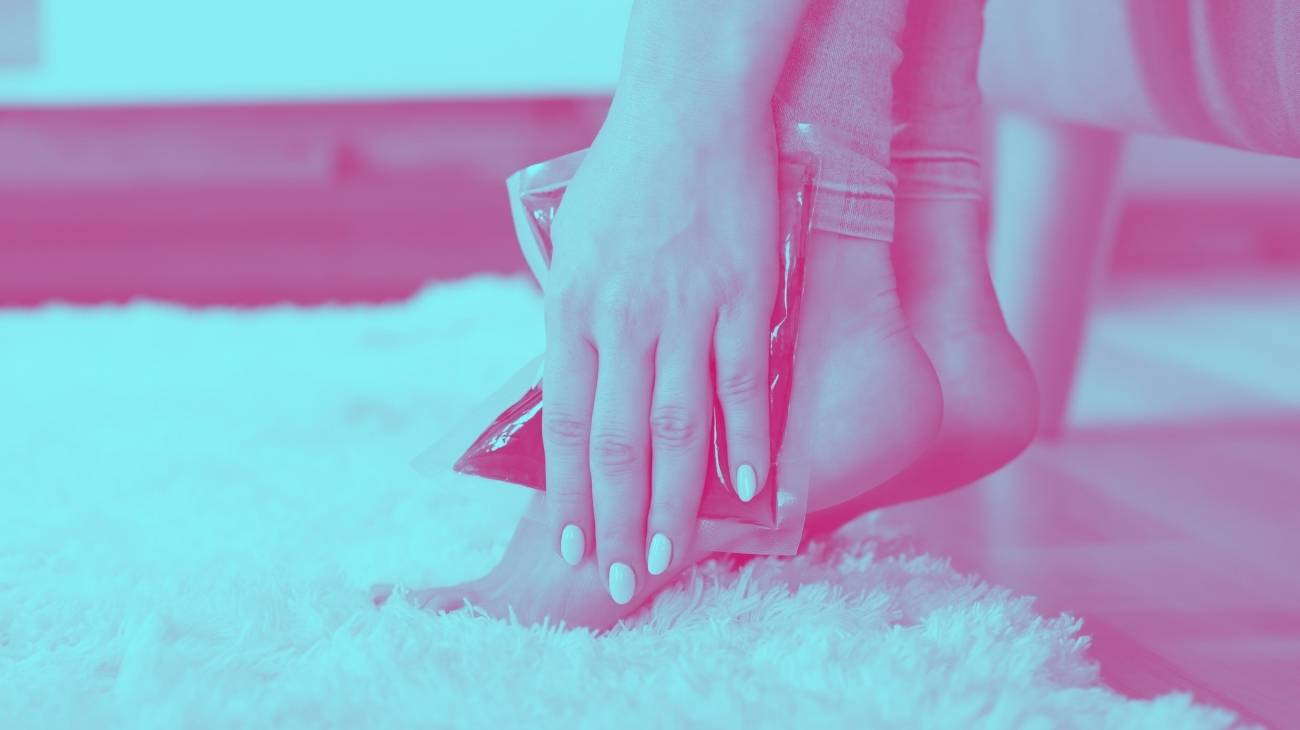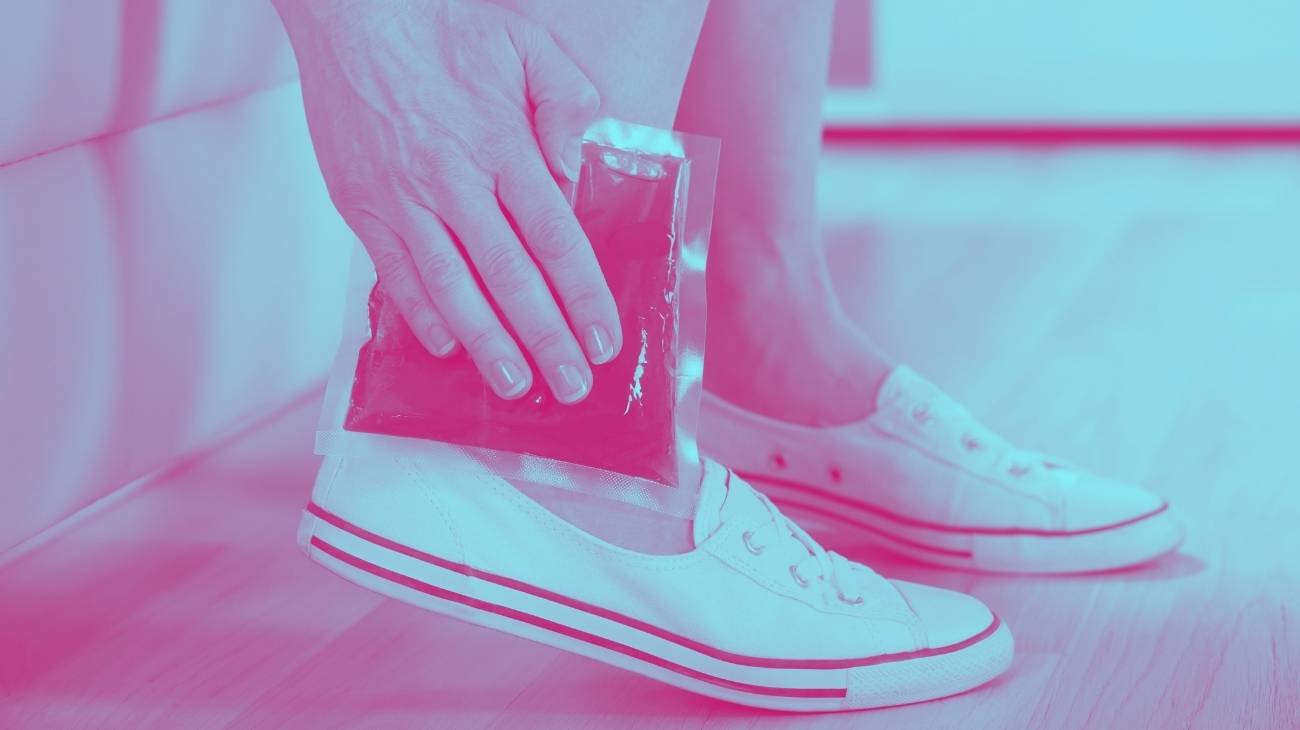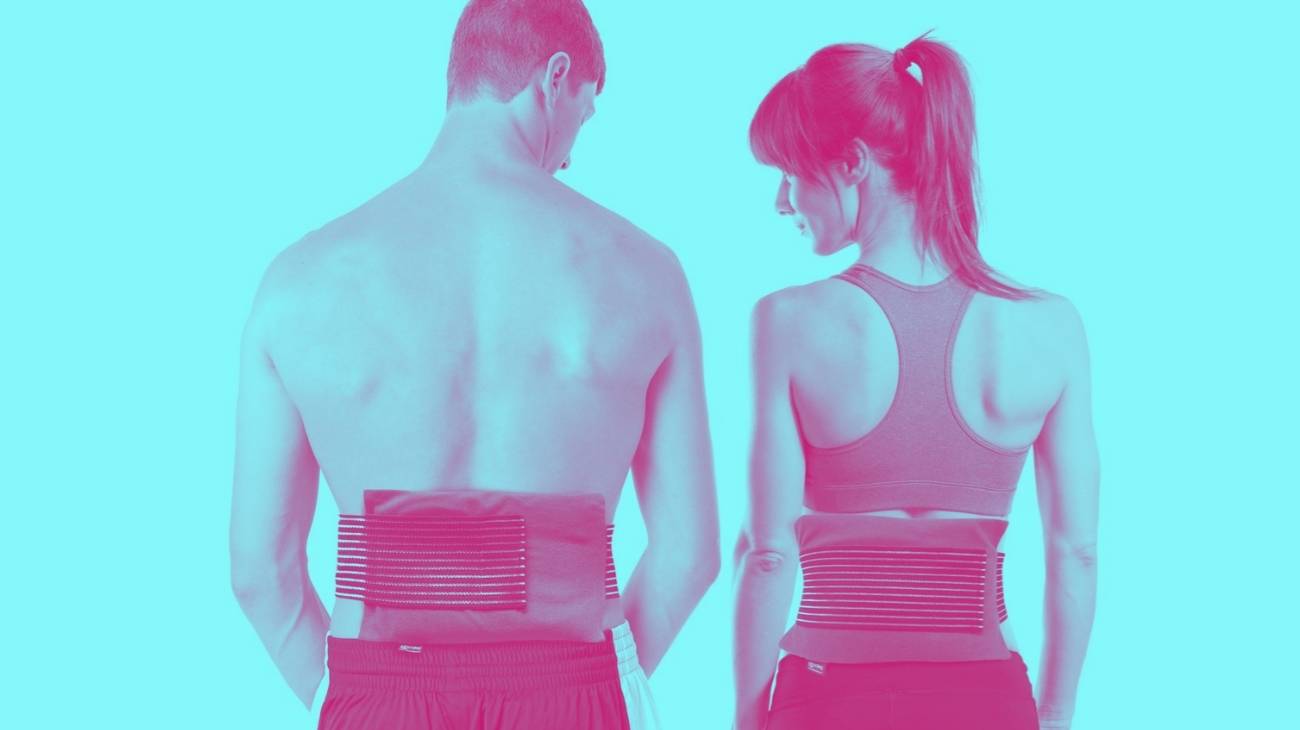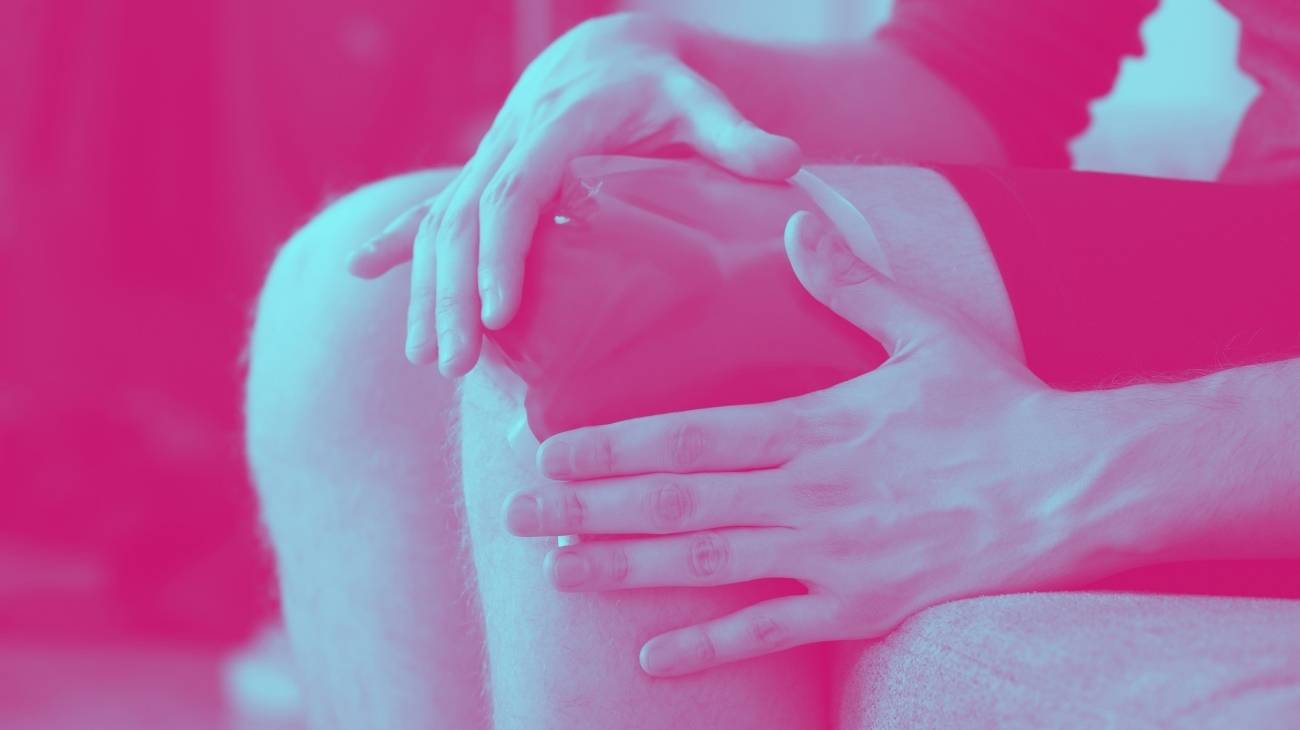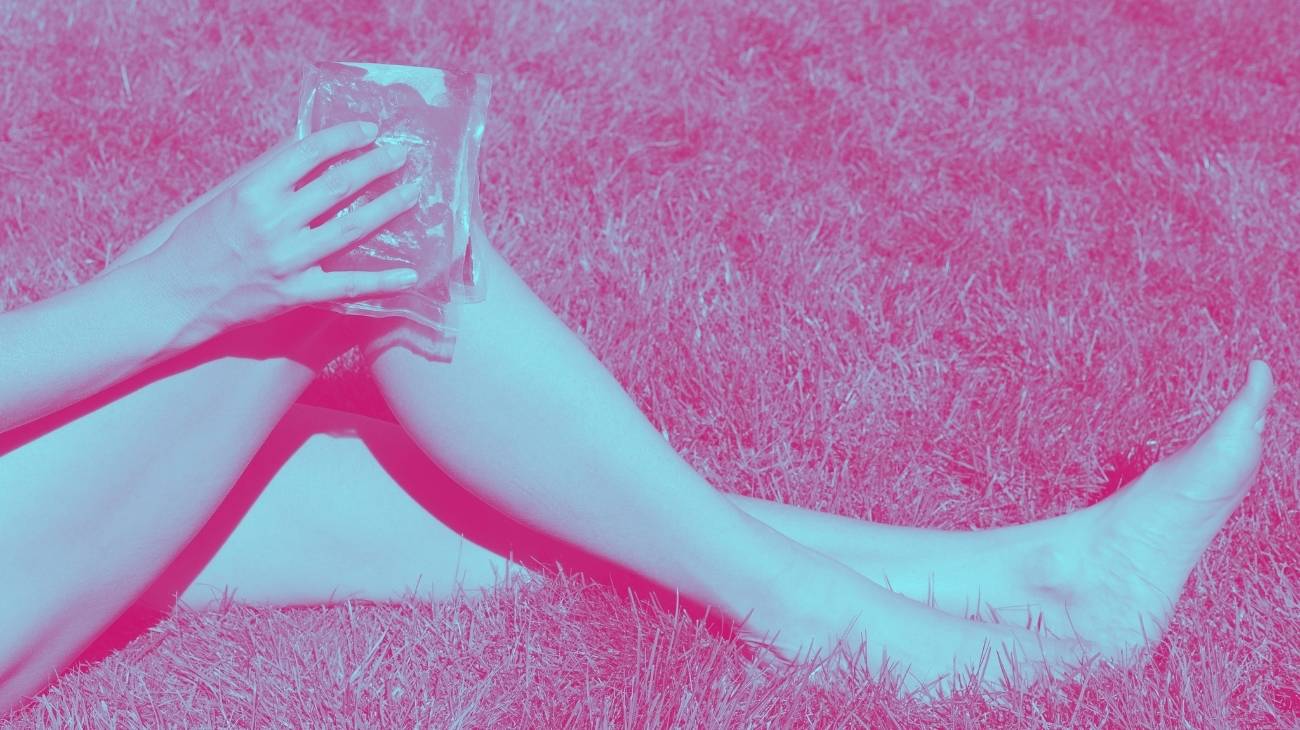- What is the best ice gel pack for runners injuries?
- Video: How to use hot and cold gel packs?
- Types of hot & cold packs you should know about
- What are the most common injuries in runners and athletes?
- When is it best to apply cold or heat?
- How can hot & cold gel packs be used to relieve the symptoms of injuries in runners?
- The best hot and cold gel packs for pain relief
Every sport has a certain risk of injury, and athletics and running are no exception. To give you an idea, in this article we will talk about the main sports injuries suffered by runners and athletes.
Cold therapy and thermotherapy are essential in the treatment of these injuries. Fortunately, today we will tell you when to use cold or heat depending on the injury you want to treat. We will also show you how to use heat/cold gel packs to successfully treat sports injuries in runners and athletes.
What is the best ice gel pack for runners injuries?
- Easy to wash
- Quality protective cover
- Highly durable cold therapy
- Fully adjustable
- Cold therapy only
- One size large only
Without spending extra money you will be able to decrease muscle stress and lower the feeling of footfatigue by simply chilling the thermal bag in the refrigerator for 2 hours. Don't hesitate any longer and choose this practical support with adjustable straps to generate compression and stimulate blood circulation. Its neoprene material is breathable and eliminates sweat, which makes this thermal splint an ideal product to be used in summer. Consider that, it does not always generate support in difficult areas of the ankle.
- Microwaveable
- Heat/cold therapy
- One size only (M)
It is useful for treating plantar fasciitis, Achilles tendonitis and ankle sprains, as the size covers all areas that are sensitive to injury. Its multifunctional design will serve you to adapt the thermal bag to the affected places and hold them with great precision. The Velcro straps may lose effectiveness as you wear this thermal ankle brace.
- Heat/cold therapy
- Microwaveable
- Short therapy duration
Its design with soft seams helps maintain comfort during use and compresses sensitive areas through the gel pack. This generates the necessary support to transmit cold or heat effectively. Use the refrigerator and microwave to achieve the desired therapeutic temperature that relieves pain and deflates the ankle. It is important to consider that, in some users, the efficiency in maintaining the temperature was minimal.
- 3 Gel Packs
- Adjustable compression with quality finishes
- One size fits all
This patella support has 4 adjustable straps strategically placed to immobilize harmful movements, which will also prevent muscle tears. You only have to remove the heating pads and place them on the inside, after getting the necessary temperature in the microwave or refrigerator. It is important to know that, in some cases, the heat does not last long and causes some discomfort.
- Material: Nylon
- Uses: Knee, Arm and Leg
- Type of adjustment: Strap with Velcro
- Cover: Yes
- No. of units: 1
- For various body areas
- Double Velcro strap
- Durable cold therapy
- Quality materials
- Not suitable for heat therapy
- One size only
Tighten the straps until you get the adjustment that improves the stability of the knee, then you should place in the refrigerator or microwave the necessary time to achieve the medical temperature that is effective for the relaxation of the tissues. It is lined with soft plush, which increases comfort, but keep in mind that it can accumulate perspiration excessively. It can be used for arthritis patients.
- 4 Adjustable straps
- 3 Gel Packs
- Hot/cold therapy
- Quality finishes
- 30 min duration
- Bulky design
It is suitable for use in arthritis treatment and in people with muscle weakness. The feeling of fatigue in the legs will begin to disappear thanks to the delivery of oxygen generated by the cold therapy combined with thermotherapy. Please note, the fabric is neoprene and may be uncomfortable on the front of the knee due to the accumulation of material.
- 2 Units per order
- Quality materials
- One size only
Choose this gel pack to treat hamstring pulls, calf strains, as well as patellar or Achilles ligament inflammation. Just place it on the injured area and adjust its straps until you get the necessary support to keep the temperature under control. This action will also help blood circulation, which will shorten the recovery period. It may happen that the straps start to break after a while.
- Large size for the whole leg
- Quality finish
- Not very flexible
To use this product and get the most out of it, you only need to freeze it until the necessary temperature is reached, then use it on the leg to stimulate tissue relaxation. It does not deform with use and its flexibility allows better support in critical areas that are often injured. As it does not restrict movement, you can use this professional cold pack at any time of the day, but you should consider that its material is not breathable, which accumulates moisture in the leg.
Video: How to use hot and cold gel packs?
Types of hot & cold packs you should know about
What are the most common injuries in runners and athletes?
Inappropriate running and athletics can be harmful. Therefore, it is important that you follow your coach's recommendations. Otherwise, you may suffer one of the following common injuries in runners and athletes:
Plantar fasciitis
The plantar fascia is a thick, arch-shaped tissue on the bottom of the foot. It connects the heel bone to the toes and cushions the impact of the foot on the ground. Inflammation of this tissue is called plantar fasciitis. This injury causes burning pain in the sole of the foot near the heel. The pain is usually worse with the first steps after standing up, but can also be triggered by standing for a long time or getting up from a sitting position.
This injury occurs when the plantar fascia is overloaded or overstretched. It often occurs in long-distance runners, as running for long distances, over rough terrain or downhill is considered one of the possible causes. Other risk factors for developing this injury include arch problems, obesity, inappropriate footwear and being between 40 and 60 years old.
Tendonitis
Tendonitis is inflammation or irritation of a tendon that causes tenderness and pain in the joint. Tendons are the fibrous strands that connect muscles to bones. The condition is caused by the constant repetition of a movement, which over time puts strain on the tendons.
In runners and athletes, the most common tendonitis is the following:
- Patellar tendonitis: Patellar tendonitis occurs in the patellar tendon. The patellar tendon is located in the knee and connects the kneecap to the shin bone. This injury causes pain in the knee. At first, the pain only occurs during physical activity, but when it gets worse, it can interfere with sports and daily life.
- Achilles tendinitis: occurs in the Achilles tendon, the tendon that connects the calf muscles to the heel bone. It causes pain at the back of the leg or just above the ankle. It often occurs in runners who suddenly intensify their training.
Iliotibial band syndrome
The iliotibial band is a thick fascial band that extends along the outside of the leg from the pelvic bone to the shin bone. Fascia is a type of connective tissue that surrounds certain structures and allows them to slide over each other.
Iliotibial band syndrome is an injury that causes pain and tenderness on the outside or side of the knee. It is very common in runners and is also known as "runner's knee". It also affects cyclists and athletes in other disciplines. The cause of this knee pain is still controversial. Some say it is inflammation of the iliotibial band, the bursa or both. However, it can be argued that overuse by runners can trigger this injury.
Sprains
A sprain is an injury where there is a stretching or tearing of ligaments. Ligaments are bands of fibrous tissue that connect two bones together and form a joint. This trauma causes pain, swelling, bruising and joint stiffness in the affected area.
These injuries occur when a bone is displaced from its natural position in the joint by a fall, blow or twisting. The ankle is most commonly sprained when it is abused on an uneven surface. But these injuries are also common to the knee, wrist and thumb.
Stress fractures
A stress fracture is a small crack in a bone. They are caused by recurrent microtrauma, such as repeated impacts during running training. But they can also be caused by weakening of the bones due to bone disease or poor nutrition.
They usually occur in the lower legs and feet. They can also occur in the arms, spine or ribs. In both cases, there is pain, increased tenderness, swelling and redness. The most common stress fractures in runners and athletes affect the tibia and metatarsals. These injuries also frequently occur in the heel bone and the ankle bone.
Muscle injuries
Most muscle injuries are caused by overexertion, trauma or forced movements. Athletes and runners are not exempt from these injuries.
- Contracture: This is when a muscle contracts continuously and involuntarily. It can be so painful that it prevents any sporting activity.
- Stretch: Stretching a muscle beyond its physiological limits. This is the stage that precedes fibrillar rupture and usually causes severe pain.
- Muscle tear: This is the partial or complete rupture of muscle fibres. Depending on the severity of the injury, it can be divided into three different degrees. It can be a tear of a few fibres or a tear of a large part of the muscle, which requires surgery.
Bursitis
Bursitis is a painful injury that consists of inflammation of the bursa. The bursa is a synovial sac that contains fluid and serves to cushion the bones, tendons and muscles around the joints. It is usually caused by overuse or repetitive movements in the affected area.
It can also be caused by diseases such as rheumatoid arthritis, gout, infections or trauma. This injury most commonly occurs on the shoulder, elbow and hip. However, it can also occur at the heel, knee and base of the big toe.
Lower back pain
Lower back pain (lumbago) is an injury to the lower back. It is caused by musculoskeletal problems in the spine. Lower back pain in particular is usually caused by mechanical problems. In many cases, the cause is natural degeneration of the spine. In other cases, it may be sprains, muscle strains, herniated or ruptured discs, radioculopathies, spinal stenosis or skeletal irregularities.
When is it best to apply cold or heat?
Depending on the type of sports injury, it is advisable to apply cold, heat or both. If you are not sure when to treat the injury with low or high temperatures, don't worry. Here are some tips on how to do it:
Cold
Cryotherapy is the application of cold for therapeutic purposes. Many of the above injuries can be treated with this technique. The application of cold has great benefits as it relieves pain and inflammation. It also causes vasoconstriction, which is ideal for reducing bleeding.
Sports injuries that can be treated with cold include:
- Plantar fasciitis: Cryotherapy is recommended for the first 48 hours after this injury is detected. Simply place the bag on the affected sole of the foot for 15 minutes three to four times a day.
- Shin splints: In this case, it is recommended to apply cryotherapy for 15 to 20 minutes 4 to 8 times a day. However, the application of cold is more effective in the acute phase, which can last several days.
- Tendonitis: In this case, cold rather than heat should be applied for the first 3 days after the injury. This is done by applying the cold compress to the affected area for 15-20 minutes every 4-6 hours.
- Iliotibial band syndrome: In the acute phase of this injury, it is important to apply cold to the lateral area of the knee. This can be done 3 to 4 times a day for 10 minutes. When these symptoms are significantly relieved, the acute phase is over.
- Sprains: As these injuries cause bruising, swelling and severe pain, they can be treated excellently with cold. Simply place the pack on the injured ankle or joint for 15 to 20 minutes every two to three hours.
- Bursitis: This injury should be treated with cryotherapy as it is an inflammation of the bursa. The cold should be applied to the affected joint for 20 minutes several times a day.
- Stress fracture: The application of low temperatures is generally recommended for the treatment of fractures. In this case, it is sufficient to apply the cold gel pack to the affected area three times a day for about 15 minutes.
- Muscle injuries: Contractures, tears, strains and other muscle injuries should be treated with cryotherapy in the acute phase (usually the first 48 hours). In this case, it is sufficient to apply cold for about 20 minutes every hour or so.
- Lower back pain: Cold can work well as a painkiller for this condition. Simply place a cold gel compress on the lower back for 20 minutes, about three times a day.
Heat
Heat therapy is a technique of applying high temperatures for therapeutic purposes. Heat has an analgesic and relaxing effect, relieves joint tension and promotes blood circulation.
However, it is important to note that the continuous application of heat can increase swelling. Therefore, it is not recommended for certain injuries where inflammation is present during the critical or acute phase of the injury (such as the first 48 hours).
However, heat therapy is recommended for the following sports injuries:
- Plantar fasciitis: After the first 48 hours of severe pain and inflammation, it is recommended to treat this injury with heat. You can do this for 15 to 20 minutes, three to four times a day.
- Tendonitis: For the first three days, it is best to treat these injuries with cold. However, from the fourth day onwards, heat can be applied to the affected area to relieve pain and speed up healing. Simply place the hot pack on the affected area for 15 to 20 minutes 3 to 4 times a day.
- Iliotibial band syndrome: After relieving pain and swelling with cold, heat can be applied. In this case, you should apply the compress to the affected muscle (tensor fascia lata) about four times a day for 15 to 10 minutes.
- Sprains: Heat can be applied to these injuries, but only 72 hours after the injury. However, some recommend heat therapy after a week of cryotherapy application. In any case, you should apply the hot pack for up to 20 minutes, 3 or 4 times a day.
- Bursitis: The application of dry or moist heat to this injury can be very helpful. However, this can only be done after the first 48 hours. In this case, you can apply the compress three times a day for about 15 to 20 minutes.
- Muscle injuries: After the first 48 hours of these injuries, it is usually possible to apply heat. Simply place the hot compress on the affected area for 15-20 minutes every hour.
- Lower back pain: This condition can be treated with heat therapy. Simply place the hot pack on the affected area 3 times a day for about 20 minutes.
How can hot & cold gel packs be used to relieve the symptoms of injuries in runners?
Hot/cold gel packs, like the ones we can offer, are packs that can be cooled and heated. They are great for cryotherapy or thermotherapy of sports injuries in runners and athletes. As you can see, these packs are two in one.
Here's how to use hot/cold gel packs to relieve the pain of sports injuries in runners and athletes:
Use cold
To use cold gel packs to treat a sports injury, simply follow the steps below:
- Leave the pack to cool in the refrigerator for about 2 hours.
- Take the pack out to check that it is at the ideal temperature. If you want to cool it further, put it back in the fridge, but if it is too cold, leave it for a few more minutes.
- Place the compress on the affected area for about 20 minutes.
- Repeat this procedure 3 to 4 times a day, one hour apart.
- Keep an eye on the wound while applying the cold to avoid damage.
Use heat
To use heat gel packs, simply follow these instructions carefully:
- It is important that the pack is at room temperature before heating.
- You can heat the pack in an 800 W microwave for about 30 seconds. However, if you have a microwave with a different power level, you will need to determine the correct time yourself.
- Take out the sachet and massage it so that the heat is evenly distributed.
- Check that the pack has reached the right temperature. If you need to heat it further, you can microwave it again in 10-second increments until you get the desired result.
- To heat the hot/cold gel on the cooker, simply put 3.5 litres of water in a saucepan and bring it to the boil.
- When it boils, turn off the cooker and immerse the bag in the water for 7 to 8 minutes.
- Check the temperature. You can continue to heat by putting the pack back into the pot at one minute intervals.
- Place the pack on the site of the sports injury for 15 to 20 minutes.
- It is recommended to do this 3-4 times a day.










